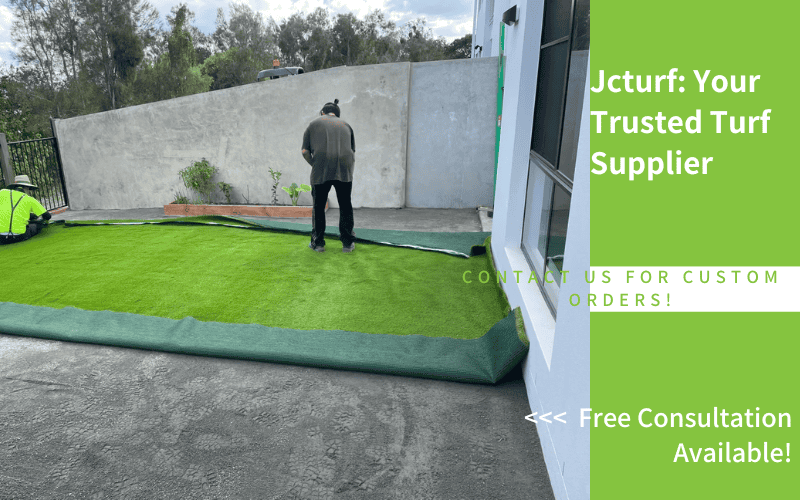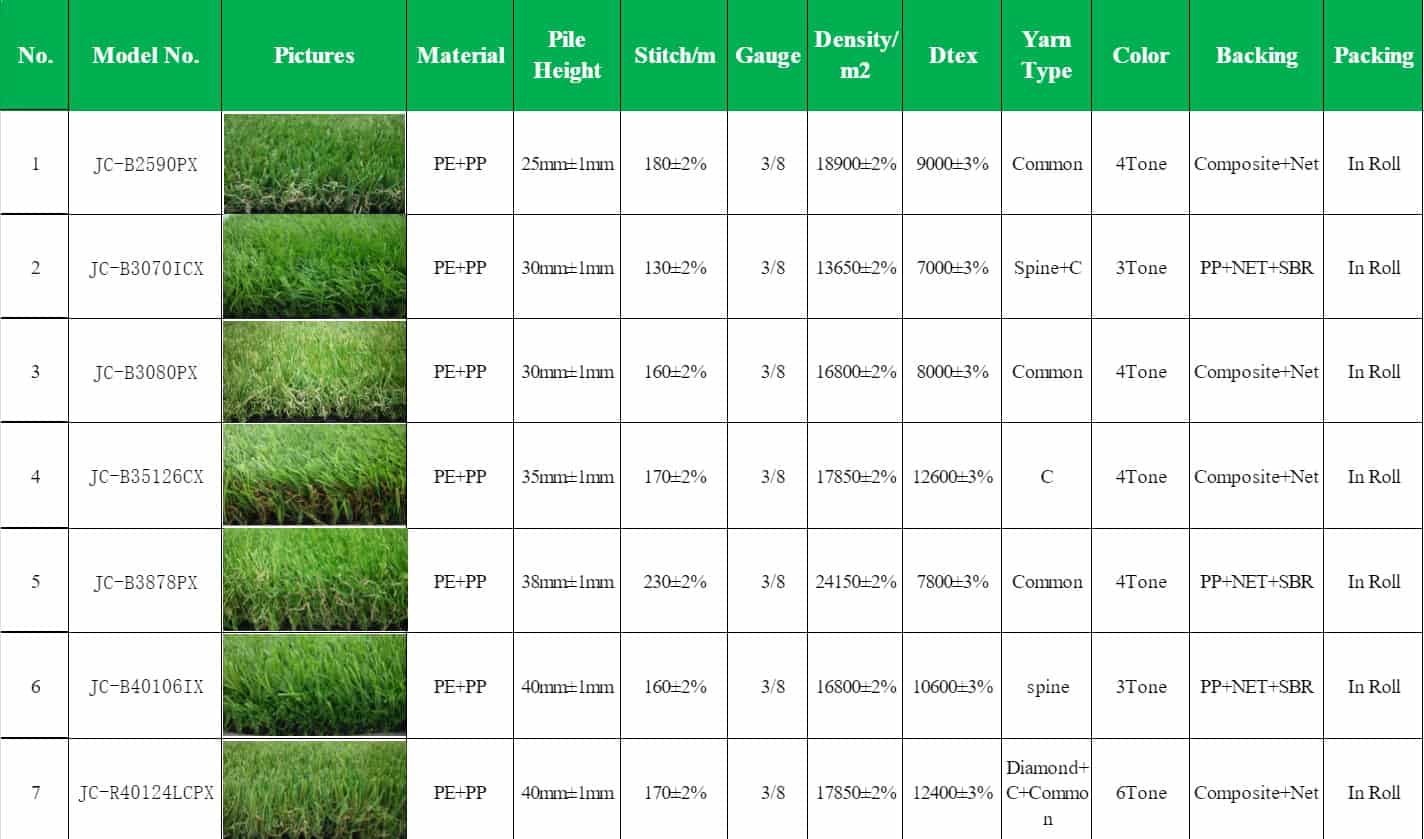To ensure proper drainage under artificial grass, the most effective solution is a compacted base made of crushed stone, gravel, or similar free-draining materials. A poorly built foundation can lead to puddling, odors, and turf damage—so getting the base right is essential.
In this guide, we’ll compare the best drainage base materials, including crushed granite, Class II road base, and recycled options. You’ll learn when (and when not) to use drainage mats or grid systems, and get a step-by-step breakdown for building a drainage-friendly base. We’ll also show you which materials to avoid completely, how to adapt your setup for pets or putting greens, and how to choose the right base based on your soil, climate, and usage.
Best Base Materials for Artificial Grass Drainage
Choosing the right base material is the most important step for building a long-lasting, well-drained artificial grass surface. Without a proper foundation, water will pool, the surface may shift, and your turf won’t last. Below are the most commonly used base materials—ranked by drainage performance, stability, and how well they hold up in real projects.
Crushed Granite or Crushed Stone – Best Overall
This is the top-rated base material for artificial grass drainage. Crushed granite or stone is made of sharp, angular pieces that lock tightly when compacted. It creates a firm, stable base that water can easily flow through.
It works especially well in:
- High-traffic areas like walkways or pet zones
- Backyards with moderate to heavy rainfall
- Commercial or sports applications
If you want reliability and professional results, this should be your first choice.
Crushed Gravel (Not Pea Gravel)
Crushed gravel is a solid alternative to granite. Like crushed stone, it allows water to drain while providing decent support. But there’s one rule: avoid rounded gravel like pea gravel—it doesn’t compact well and shifts over time.
This material is great for:
- Residential lawns and garden landscapes
- Moderate-traffic areas
Make sure the gravel is sharp-edged and compacted in layers.
Class II Road Base
This material is a mix of crushed stone, sand, and fine particles. It compacts tightly and forms a strong foundation, which is why it’s used in large commercial or public projects.
It’s a solid choice if:
- You need a stable base for high-traffic areas
- You’re installing turf over a wide surface
However, because it contains a lot of fines, its drainage may be slower than pure crushed rock. If you’re working in a wet area or clay-heavy soil, double-check that the material is free-draining and not overly compacted.
Recycled Road Base
Recycled base material is made from leftover construction debris—mostly concrete or asphalt crushed into small pieces. It’s a budget-friendly option, but the quality can vary.
Use it when:
- Cost is a big concern
- You’re working on a low-foot-traffic space
Check that it drains well and doesn’t contain clay-heavy fines that trap water.
Decomposed Granite (DG)
DG is finely crushed rock that compacts into a smooth, natural-looking surface. It drains slower than gravel or stone but still works in dry climates or light-use areas.
Consider DG for:
- Decorative lawns or garden paths
- Dry or low-rainfall regions
Keep in mind: it can wash away in heavy rain and may need occasional top-ups.
Sand (As a Top Layer Only)
Sand should never be used alone as a base. It doesn’t compact well and holds water. However, it’s sometimes added as a thin top layer over compacted stone to help level the surface.
Use it only:
- To fine-tune leveling before turf installation
- As infill once turf is laid
Never rely on sand for drainage or structural support.
Should You Use a Drainage Mat or Grid System?
Drainage mats and grid systems are usually not needed under artificial grass—unless you’re working with special conditions. If you’ve used a proper crushed rock base, water will drain naturally without any extra help. These systems add cost and complexity—and often aren’t necessary.
However, in certain situations, they can make a big difference:
- You’re installing turf on a rooftop, balcony, or concrete base
- Your soil holds water, especially clay-heavy or poorly compacted ground
- You live in an area with frequent heavy rain and want faster drainage
- You’re building a pet turf zone where odor control is critical
If one of these sounds like your situation, a drainage mat might be worth the investment. Otherwise, a well-built gravel or stone base will do the job just fine.
Step-by-Step: How to Build a Drainage-Friendly Base
Building a solid drainage base under artificial grass is what keeps your lawn dry, flat, and long-lasting. If you’re not sure where to start, don’t worry—this process is easier than it sounds. Here’s exactly how to prepare a drainage-friendly foundation step by step, using basic tools and materials.
Step 1: Excavate the Area
Start by removing the topsoil from the entire turf area. Dig down at least 3 to 4 inches deep—more if you expect heavy rain or plan to install pet turf. This makes space for the new base and prevents future water buildup. Clear all roots, rocks, and debris. A flat, clean base is the first key to a professional-looking result.
Step 2: Add and Compact the Base Material
Spread your chosen base material—like crushed stone or gravel—in thin layers. Don’t dump it all in at once. Each layer should be no more than 2 inches thick. Use a plate compactor (you can rent one) to press it down evenly before adding the next layer. A compacted base keeps your turf from sinking or shifting later.
Step 3: Install Drainage Grid or Mat (Optional)
If you’re working with poor-draining soil like clay, or you’re installing turf over concrete, now is the time to lay down a drainage grid or mat. These products sit between the base and turf, helping water flow away faster. They’re not required in most yards—but in problem zones, they make a big difference.
Step 4: Add a Permeable Weed Barrier
Roll out a permeable weed barrier fabric across the base. This stops weeds from growing up into your turf without blocking water flow. Make sure the fabric is breathable—not plastic. Overlap the edges by 4–6 inches and stake it down at the corners to keep it from moving.
Step 5: Lay and Finish the Turf Surface
Place the artificial grass over the prepared base and trim it to fit. Use turf nails or U-pins every 6–12 inches along the edges to secure it. Then, brush the grass fibers upright using a stiff broom or power brush. Spread infill (like silica sand) evenly across the turf to weigh it down and improve drainage. Finally, check for any low spots and level them out with a bit more infill.
What NOT to Use Under Artificial Grass
Not everything works as a base for artificial grass—some materials might seem fine but actually cause drainage issues, surface instability, or long-term damage. Here’s what to avoid when building your turf foundation:
- Plain Soil: This is one of the biggest mistakes. Natural soil holds moisture, shifts when wet, and becomes muddy over time. It offers little structural support, so your turf may sink or wrinkle within months. Even if the area looks dry now, rain will quickly expose the problem.
- Sand Used Alone: Sand drains well, but it doesn’t hold shape. On its own, it’s too loose to support artificial turf. Over time, the surface may shift, creating dips or uneven spots. Sand can only be used as a top leveling layer, never as the main base.
- Pea Gravel or Rounded Rocks: Rounded stones don’t lock together when compacted. That means your turf won’t have a stable base and can slide or ripple. Always choose crushed materials with angular edges for proper compaction and grip.
- Plastic Sheeting or Tarps: It may seem logical to block weeds or moisture using plastic, but this traps water instead of letting it drain. As a result, you’ll get foul smells, trapped heat, and even mold under your turf. Use a permeable weed barrier instead.
By avoiding these common base mistakes, you’ll ensure your artificial grass drains properly and stays looking great for years.
Drainage Tips for Special Applications
Not all artificial grass projects are the same. Certain applications—like pet turf or putting greens—have special drainage needs that go beyond a basic gravel base. Here’s how to adjust your installation approach to match specific use cases.
Pet-Friendly Turf Areas
When dogs are part of the picture, drainage is about more than just water—it’s also about urine. A fast-draining base is essential to keep odors from building up. Crushed granite or Class II road base works best here. Skip materials that trap moisture, and avoid using any base that doesn’t compact tightly.
You should also use antimicrobial infill designed for pet turf. It helps neutralize smells and keeps the surface fresher over time. The goal is to move liquid down and out as quickly as possible.
Backyard Putting Greens
Putting greens need two things: smooth ball roll and reliable drainage. To get both, start with a well-compacted, fine-textured base—like decomposed granite or crushed fines. The surface must be perfectly level and firm to support consistent play.
Also, ensure that water drains evenly across the green. Even slight pooling can damage the turf or warp the roll. A subtle slope (1–2%) can help direct water off the surface without affecting playability.
Final Advice: Choose Materials Based on Site Conditions
There’s no one-size-fits-all answer when it comes to base materials. The best choice depends on your soil type, how the turf will be used, and your local weather.
For example, clay-heavy soil may need a drainage mat or deeper gravel base. High-traffic or pet areas require tightly compacted stone. In dry zones, decomposed granite might be enough. Always match the material to the conditions—not just the budget.
If you’re unsure, go with compacted crushed stone plus a permeable weed barrier. It’s the safest, most versatile solution for long-term drainage and stability.


